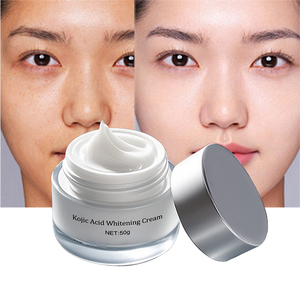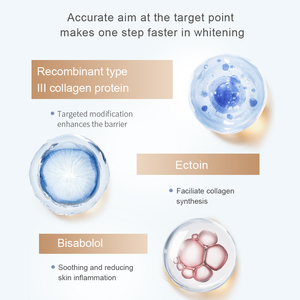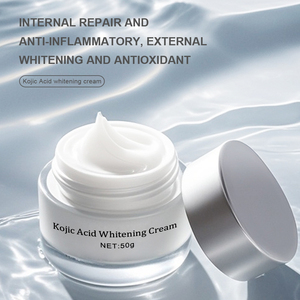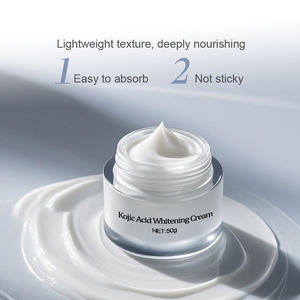
All categories
Featured selections
Trade Assurance
Buyer Central
Help Center
Get the app
Become a supplier

(606 products available)




















































Market Size: The global skincare market, encompassing products like scar repair cream, is expected to grow from $134.1 billion in 2023 to $143.5 billion in 2024, reflecting a 7.0% CAGR. By 2028, projections indicate a further increase to $181.6 billion, driven by rising consumer awareness and a growing focus on personalized skincare solutions. This growth is particularly significant in the Asia-Pacific region, which is anticipated to be the fastest-growing market during this period.
Consumer Insights: The demand for scar repair cream is primarily driven by consumers aged 18-34, who prioritize product efficacy and ingredient transparency. There is a notable shift towards products featuring natural and clinically validated ingredients, with consumers increasingly seeking certifications that assure product safety and effectiveness. Research indicates a growing interest in formulations that combine medical-grade ingredients with cosmetic benefits, addressing unmet needs in scar management.
Top Brands Dynamics: Major players in the skincare industry are innovating to meet rising consumer demands. For instance, recent product launches highlight the integration of advanced technologies, such as silicone-based formulations and continuous-wear designs, aimed at enhancing the efficacy of scar repair cream. Companies are focusing on creating multifunctional products that appeal to the evolving preferences of a more informed consumer base, thus strengthening their market positions.
Scar treatments mostly exist in cream, lotion, gel, silicone sheets, and adhesive crackers. Plastic surgeons also offer injectable fillers, which, as the name suggests, fill in the scar depressions and improve their appearance. Scar removers help the skin regain its smooth texture and even tone. They can also bring down the raised scar tissues, especially keloids, and improve the associated itch and irritation. Here are the main types of top scar cream.
Scar creams incorporate active ingredients. These components increase collagen production and skin cell turnover, which reduces scars. They also moisturize the skin and may contain lighteners that help the scar tissue blend in with the rest of the skin. Doctors recommend scar creams for newer scars, like those from surgery or injuries, to hasten healing.
Silicone sheets and gels are semi-occlusive humid environments that offer faster scar healing. Like scar creams, they work better on newer scars and prevent excess collagen deposition, working well for hypertrophic and keloid scars. However, they come with an oily feel, especially if the gel is used. Some also find the silicone sheet suffocating and uncomfortable.
Scar patches are silicone-infused patches that stick onto scars and feature longer-lasting wear compared to silicone gels and sheets. Some scars come with extra features, including drug-eluting technologies. These patches incorporate scar-removing drugs like corticosteroids, which reduce inflammation. Others may also have anti-infection properties.
OTC topical scar creams are the most convenient option for scar removal. They are readily available at most pharmacies and can also be purchased online. Unlike silicone gels and sheets, these creams are lightweight and non-sticky, making them easier to apply and incorporate into daily skincare routines. Some are formulated explicitly for acne, surgical, or stretch mark scars.
Scar creams help eliminate different types of scars. These scars include keloids, which are raised scars that heal over the normal skin once it has stopped healing. The body keeps producing collagen even after the wound has healed, leading to excess tissue. They can also go deep under the skin, which makes them hard to eliminate, often requiring surgical intervention, especially if they're large or unsightly.
Other scars include hypertrophic scars, which are slightly more even with the skin than keloids. Hypertrophic scars typically form on the chest, back, and joints and are more common among young adults. Contracture scars also accompany severe burns and injuries and may affect the adjacent muscles and nerves. These scars pull the skin tight, affecting movement, which is why scar creams are essential.
acne scars also constitute the common type of scar that people deal with. Acne scars develop after the skin heals from deep cystic acne. They also come in different forms, including indented (atropic) acne scars. Acne scars can be rolling (wide and debulking the skin), boxcar (narrow with angular edges), or ice-pick (deep and narrow), which are difficult to reach and remove, requiring dermatological help. Fortunately, all these scars can be treated with scar creams. Other than aesthetics, scars may itch and be uncomfortable. Surgical scar creams eliminate these sensations and improve the overall patient experience.
Many things make a scar cream effective. For instance, the best scar creams have silicone as the active ingredient since studies show it reduces scar firmness and height by up to 83%. This is especially great for hypertrophic and keloid scars. Scar cream for old scars may also contain other ingredients.
These include corticosteroids that reduce inflammation and excess collagen in raised scars, which help flatten the scar. Anticipating Vitam E and C, while not superfluous, are best for treating old scars because of their skin-repairing properties, while beta hydroxy acids target deep scars.
Some scar creams also contain all-natural scar removal elements, including onion extract and lavender oil, which have stood the test of time. The scar cream's consistency also matters, especially for visible scars that require daily applications. Most scar creams are lightweight and non-greasy, making them suitable for daily use.
Some are more moisturizing, which helps hydrate dry scars while promoting skin elasticity. While selecting the scar cream, consider whether a prescription-strength formula is necessary. Over-the-counter creams are highly effective for minor scars. However, tougher scars, like keloids, may require topical corticosteroids only available through prescription.
Also, ensure the scar cream is suitable for your scar type. While most creams work on all kinds of scars, some are designed specifically to target hypertrophic, keloid, and acne scars. Last but not least, the scar cream should be based on credible scientific studies rather than anecdotal evidence.
A1: Yes, they work. However, they work better on newer scars than old ones.
A2: Some may still be effective. However, professional treatments like chemical peels and laser therapy are recommended.
A3: The scar cream should be applied after cleansing the scarred area and before moisturizing and sunscreen.
A4: Prescriptive scar creams, chemical peels, and laser therapy are the fastest ways to deal with stubborn scars.
A5: Yes. Lavender oil, tea tree oil, and frankincense are among the best natural scar removers.
Scar creams offer many benefits that help improve a patient's appearance and comfort. They lessen scar visibility, making it more attractive, especially for raised scars like keloids. They smooth the scar tissue, which may feel firm or rough, and restore skin texture and suppleness.
Most creams are formulated with advanced ingredients to improve collagen remodeling and reduce scar height and tightness. You feel less itchy and irritated when an effective scar cream soothes and moisturizes the skin and eliminates the immune reactions bothering you. Scar cream decreases the time for scar tissue maturation, cleaning, and healing by keeping the tissue moist and occluded, extending its shelf life.
Apart from all this, scar creams save one from costly and invasive procedures like surgical excision, skin grafting, and other dermatological interventions that come with their fair share of complications. These creams can improve the patient's general quality of life, minimize the need for invasive procedures, and improve patient satisfaction. Many factors go into the scar cream's effectiveness, persistence, and type of scar.